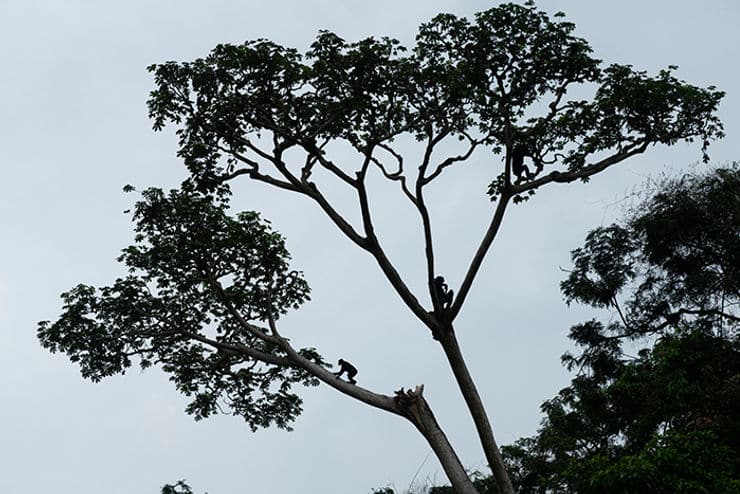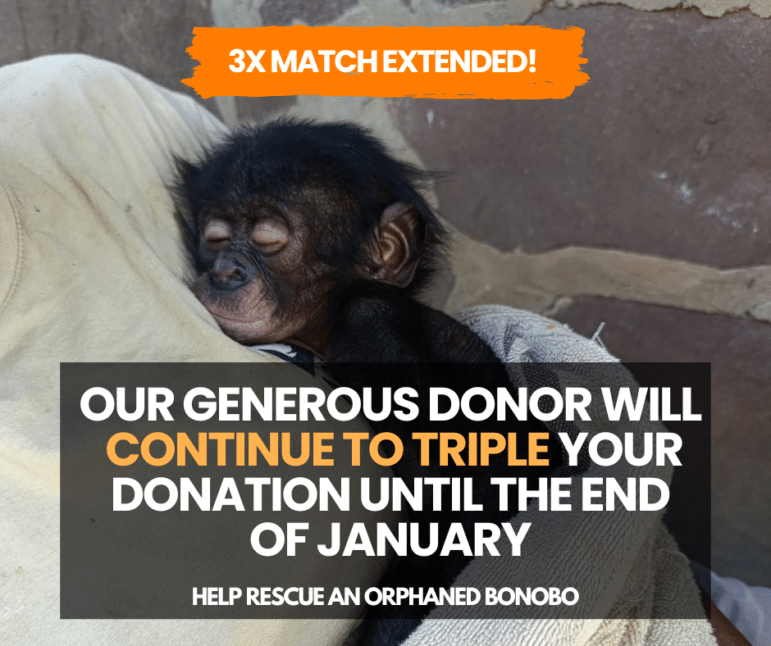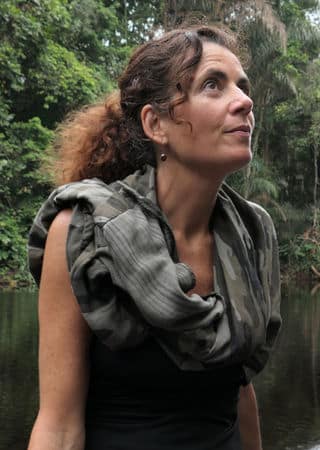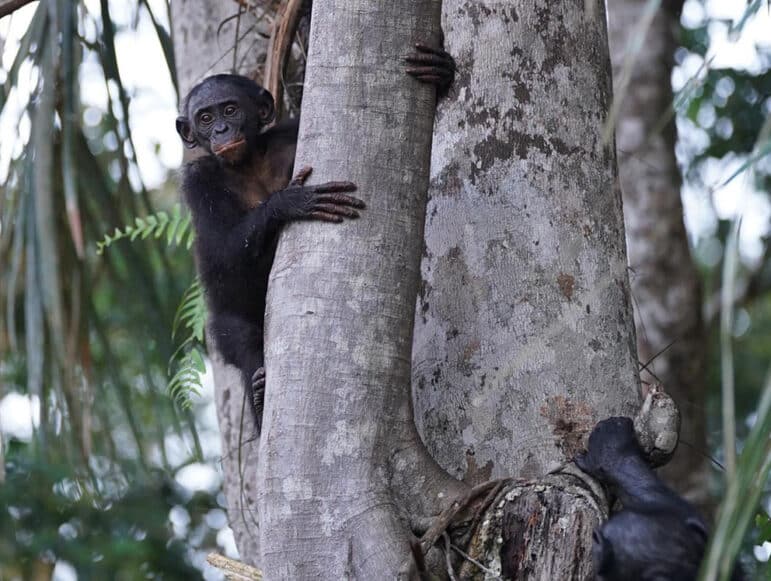
The Congo Basin, unique habitat for bonobo apes, has been ranked as a Top 10 globally important spot for carbon storage, biodiversity and water, according to a major new study.
The research by Nature Map, which includes the work of scientists from more than 40 institutions, mapped the values of nature which identified the most globally important places for conservation.
The loss of these would be of great detriment to the global climate, biodiversity and water availability.
Peatlands
The high ranking of the Congo Basin is, in part, due to its bog.
In 2017, Congolese and British scientists confirmed a vast swathe of peatlands in the Democratic Republic of Congo.This part of the Congo is home to bonobos, a critically endangered great ape and humankind’s closest genetic relative. The Congo bog alone stores 30 billion metric tonnes of carbon – the same as three years of global fossil fuel emissions and ‘a quantity that is similar to the above-ground carbon stocks of the tropical forests of the entire Congo Basin’, said the scientists’ report.
The Congo bog stores 30 billion metric tonnes of carbon – the same as three years of global fossil fuel emissions.
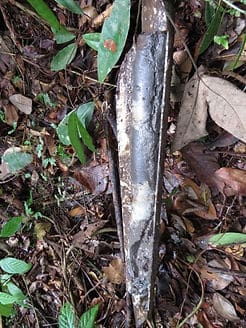
“Peatlands are highly underrated ecosystems,” said entomologist Kyle Johnson. Few people realise the importance of peat bogs to environmental diversity, as the world’s best carbon sink, and as a wildfire break.
However, the great thing about peatbogs is they contain peat and the great problem with peatbogs is they contain peat. Sounds obvious, but peatbogs are waterlogged swamps where, in their wet form, partial decomposition stores the carbon, usually released into the atmosphere, in peat. In simple terms peat is a ‘quick’ forming fossil fuel; a depth of two metres – the average depth of the Congo peatland – takes around 2,000 years to form.
When peatbogs dry out, though – through human action in the form of drainage or climate change – they become highly flammable.
Fuel to the Fire?
Peatlands are found all over the world. The Great Dismal Swamp, which covers parts of Virginia and North Carolina in the United States, has endured a long history of drainage through roads, canals and ditches. This leaves it vulnerable to disastrous wildfire from even a single strike of lightning. “Smouldering fires like this burn so deeply that it sometimes takes a tropical storm or even a hurricane to extinguish it,” said hydrologist Fred Wurster of the U.S. Fish and Wildlife Service.
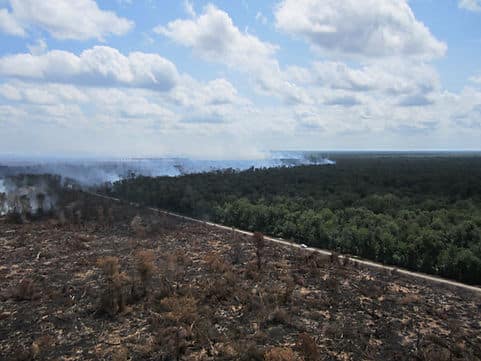
Wet peatbogs can be a wildfire break; dry peatlands are literally fuel to the fire and increase global temperatures.
The flammability of peat makes it an easy fuel source. Sixty power plants in Finland run on peat and six percent of Ireland’s heat is from peat. Rwanda, where half its people live in poverty, views its peat stock as the financially affordable option to generate 20 percent of the country’s electricity.
And whenever peat is burned, all the vast stocks of carbon stored are released into the atmosphere, helping to increase global temperatures.
Conservation of Peat
To keep the Congo’s vitally important carbon sink there needs to be another option for peatbogs other than as drained land, fuel or a horticultural ingredient.
“The recent discovery of the peatlands,” said Greenpeace Africa after the 2017 scientific investigation of the central Congo Basin, “adds urgency to the need to find development pathways that will radically improve local livelihoods and welfare without compromising the integrity of the ecosystem.”
“As indigenous people, peatlands are part of our heritage and their discovery for the world to see represents a great hope for future generations,” said Valentin Egobo, spokesperson for Lokolama village where the scientists were based. “We hope our government will support us in our role as guardians of this ancient forest and provide us with the needed support to safeguard peatlands for our children and for the world.”
Considering the importance of peatbogs, conserving the highly endangered bonobo in their own habitat has become even more critical.
Bonobos
The 2017 study of the Congolese peatland centred on the province of Equateur, DRC, where Ekolo ya Bonobo Community Reserve is situated.
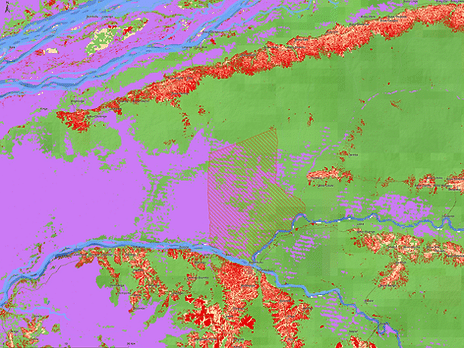
Ekolo ya Bonobo – Land of the Bonobos in Lingala – is home to nearly 30 rewilded bonobos who were rehabilitated at Lola ya Bonobo sanctuary near Kinshasa. The reserve was created in agreement with local residents, who agreed to dedicate their sacred land for the project, and Les Amis des Bonobos du Congo (Friends of Bonobos of the Congo), and covers 120,000 acres of protected land.
Ekolo has attracted funding for schools, healthcare and infrastructure in the area, and has also improved economic prospects through jobs and training.
Friends of Bonobos involves local communities in decisions relating to Ekolo ya Bonobo. It’s very much a collaboration, not a top-down or outside-in approach. The goal is to ensure local people see direct benefits from preserving bonobo habitat, such as jobs, health care, and better education for their children.
Extreme poverty is the biggest threat to bonobos, the forest and the peatlands.
In the Congo, especially after years of conflict, many people rely on forest resources to survive. The biggest threat to bonobos, the forest and the peatlands – causing the deaths of adult bonobos for bushmeat, the pet trade of baby bonobos, logging, and the possible draining of peatlands for plantations and fuel – is extreme poverty.
By prioritising the community of humans – by enabling access to forest-friendly funding and alternative, reliable sources of income – wildlife, plantlife and carbon sink can also be protected.
Louisa Davison of Wiltshire, UK, is a public relations pro, a writer, passionate about keeping our livable climate and a bonobo obsessive. “After ten years of knowing about bonobos, I wanted to make sure they remained and thrived in our world. Friends of the Bonobos are one of the best charities to work with to achieve this. Contributing to this blog is my small way of helping.”
